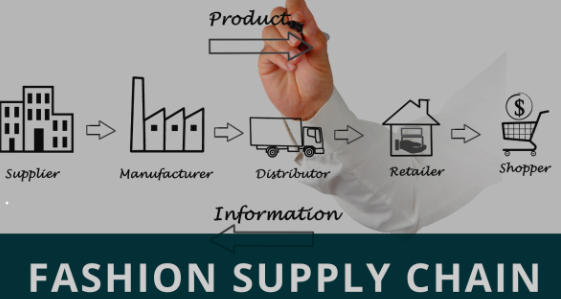Transparency in the fashion industry has emerged as a pivotal force, reshaping the landscape of production and supply chain practices. This comprehensive exploration delves into the multifaceted dimensions of transparency, examining its historical evolution, significance, challenges, and the transformative impact it can have on the fashion ecosystem. From fostering responsible consumerism to addressing labor and environmental concerns, transparency is a linchpin for the industry’s journey towards ethical and sustainable practices.
I. Introduction: Unveiling the Need for Transparency in Fashion
A. Setting the Stage: Defining Transparency in Fashion
This section provides a foundational understanding of transparency in the context of the fashion industry. It delves into the nuanced definition of transparency, covering its various dimensions and why it has become an imperative for the fashion ecosystem.
B. The Evolution of Fashion Transparency
Tracing the historical evolution of transparency sets the stage for understanding its current significance. From its nascent beginnings to the present day, this section explores the key events and turning points that have shaped the trajectory of transparency in fashion.
II. Significance of Transparency in Fashion Production and Supply Chain
A. Building Consumer Trust: The Core of Transparency
Central to the significance of transparency is its role in building trust between fashion brands and consumers. This section explores how transparency acts as a bridge of credibility, empowering consumers with the information needed to make informed and ethical choices.
B. Addressing Labor and Human Rights Concerns
Transparency in fashion production and supply chain management plays a crucial role in addressing labor and human rights concerns. Case studies and real-world examples illustrate how transparent practices contribute to fair labor conditions, worker empowerment, and overall social responsibility within the fashion industry.
C. Environmental Sustainability: A Call for Accountability
The environmental impact of fashion is substantial, and transparency becomes a tool for holding brands accountable for their ecological footprint. This section explores how transparency fosters sustainability by unveiling production practices, material sourcing, and the overall environmental impact of fashion products.
III. Challenges on the Road to Fashion Transparency
A. The Complexity of Global Supply Chains
Fashion supply chains are intricate and span across the globe, presenting a significant challenge to achieving transparency. This section delves into the complexities of global supply chains, examining the difficulties brands face in obtaining and disseminating detailed information about each stage of production.
B. Lack of Standardized Reporting and Metrics
The absence of standardized reporting and metrics hinders transparency efforts in the fashion industry. This section discusses the need for universally accepted standards and metrics that can facilitate consistent reporting on sustainability and ethical practices, allowing for meaningful comparisons between brands.
C. Resistance from Stakeholders and Industry Practices
Some stakeholders within the fashion industry may resist transparency due to concerns about competitive advantage or the exposure of potentially unfavorable practices. This section explores the resistance to transparency and how changing industry norms can overcome these challenges.
IV. Tools and Initiatives for Enhancing Transparency
A. Technology and Traceability in Fashion Supply Chains
Advancements in technology, such as blockchain and RFID, are revolutionizing traceability in fashion supply chains. This section explores how these technological tools are being leveraged to enhance transparency, allowing brands and consumers to trace the journey of products from raw materials to the finished garment.
B. Industry Initiatives and Certification Programs
Various industry initiatives and certification programs have been developed to encourage and recognize transparent and sustainable practices. This section provides an overview of prominent initiatives, such as the Fashion Revolution’s Fashion Revolution Week and certifications like Fair Trade and B Corp, and their impact on fostering transparency.
C. Consumer Activism and Demand for Transparency
Consumers are increasingly becoming agents of change through their activism and demand for transparency. This section explores the power of consumer activism, the role of social media in amplifying consumer voices, and how the demand for transparency is reshaping brand practices.
V. Case Studies: Exemplifying Successful Transparency Practices
A. Patagonia: A Beacon of Transparency and Accountability
The case study on Patagonia exemplifies how the outdoor clothing company has set industry standards for transparency, environmental sustainability, and corporate responsibility. It highlights the impact of Patagonia’s transparent practices on consumer perception and brand loyalty.
B. H&M: Navigating the Path to Increased Transparency
H&M’s journey towards increased transparency is examined in this case study. It explores the challenges the fast-fashion giant has faced, the initiatives it has implemented, and the lessons learned in its efforts to become a more transparent and sustainable brand.
VI. The Future of Transparency in Fashion: Charting a Sustainable Course
A. The Role of Technology in Shaping the Future
As technology continues to advance, its role in shaping the future of transparency in fashion is paramount. This section explores emerging technologies and their potential impact on further enhancing transparency across the fashion supply chain.
B. Regulatory Landscape and Policy Changes
The regulatory landscape is evolving, with increased emphasis on sustainability reporting and ethical practices. This section discusses how regulatory changes and policy interventions can influence transparency in the fashion industry.
C. Collaboration and Industry-Wide Efforts
Collaboration among industry stakeholders, including brands, manufacturers, and NGOs, is crucial for achieving widespread transparency. This section explores the potential for collaborative efforts to drive systemic change and create a more transparent and sustainable fashion ecosystem.
Conclusion:
In conclusion, transparency in fashion production and supply chain management is not just a trend; it’s a necessity for the industry’s sustainable future. As consumers become more conscious of their choices, and regulatory pressures increase, brands must prioritize transparency to build trust, address ethical concerns, and contribute to environmental sustainability. Through technological advancements, industry initiatives, and collaborative efforts, the fashion industry can navigate towards a future where transparency is the norm, fostering a more ethical, responsible, and resilient ecosystem.
